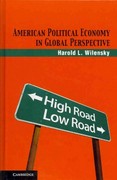1. Bob is offered a raffle ticket. With probability, the raffle ticket wins, and pays 5 dollars. With probability 1-p the ticket loses and pays nothing. One ticket costs 1 dollar. (a) Assume that Bob has von Neumann-Morgenstern utility(@) =2 over change in his wealth . This means that if Bob wins/loses dollars his utility isu(d) =d3 and NOT (initial wealth+d)3. Let a be an amount of money such that Bob is indifferent between receiving " for sure or buying one ticket. Find. (b) Now assume that Bob is risk-neutral. An unscrupulous raffle saleswoman makes Bob the following offer. For 50 cents, she will tell him whether the ticket for sale will win or lose before Bob decides to buy it. I = 1/4, will Bob accept the saleswoman's offer? Assume that there is only one ticket available for him to purchase. 2. Consider the following lotteries: (1) $5000 for sure; (2) a - chance of $30,000 and a chance of $5000 (and 8106 C a chance of nothing); (3) all 106 chance of $5000 (and a-89 chance of nothing); and () a + chance of $30,000 (and a chance of nothing). Are the preferences In Ly and LA Ly consistent with the independence axiom? (Assume that the preference relation is continuous.) 3. Let L denote the set of simple lotteries over the set of outcomes' = (c , (2, (, ca). Consider the von Neumann-Morgenstern utility function / : C - E. defined by U (P1, P2: P3, P4) = P2 2 + Pall3 + 4P4: where u., i = 2,3, is the utility of the lottery which gives outcomes;, with certainty. Suppose that the lottery 1 = (0, 2, -,0) is indifferent toL2 = (,0,0, ;) and that L3 = (0, , , ;) is indifferent to 4 = (0 , .0). Find the values ofit, and 13. 4. An individual is seen to place an even-money $100,000 bet on the Lakers to win the NBA championship. If that individual has a In() von Neumann-Morgenstern utility function and his current wealth is $1,000,000, what is the minimum probability he must assign to the Lakers winning the championship? 5. An individual has wealth W. Her von Neumann-Morgenstern utility function over non- negative levels of wealth isu(y) = ye, where 0 1. How much will she bet (as a function of). 6. An investor's initial wealth is $ 30,000. The riskless asset has a rate of return equal to 1.05. The rate of return of the risky asset is 1.03 with probability", and 1.06 with probability 100. The von Neumann-Morgenstern utility function is(2) = In(). Find the amount of wealth that the investor puts into the risky asset







